Содержание
- 2. Who am I? Study of Social; Theoretical and Empirical Psychology, Heidelberg PhD Utrecht University/ICS (1995): Should
- 3. Research interests/ ongoing projects Influences of contextual (institutional, neighborhood etc) conditions on creation of networks, social
- 4. Two questions: From time to time we discuss personal matters with other people. How many people
- 5. Why study friendship & size of networks? Consequences Loneliness/ social isolation Well-being Social support Information Social
- 6. “To speak of social life is to speak of the association between people – their associating
- 7. Topics and issues - morning - 1. How to measure people’s network? 2. How large are
- 8. Topics and issues, - afternoon - 1. Theories about urban life and community – on the
- 9. Topics and issues, morning session 1. How to measure people’s network? 2. How large are personal
- 10. C Personal networks Size, degree Density Centrality Resources
- 11. Social Network Data Collection: four key dimensions (1) (1) Tie strength Emotional closeness Contact frequency Reciprocity
- 12. (2) Direct or indirect ties? (beyond direct personal network) My friends may know people I don’t
- 13. Intermezzo Small world experiment
- 14. H B C G F E D A H B C F E D G A
- 15. The Small World Problem (2) What is the likelihood for two random people in a given
- 16. Experiment and Results Transfer a message via informal networks to a target person living hundreds of
- 17. “Six degrees of separation” We often do not know with whom our network members are connected!
- 18. What is intriguing in this experiment? THERE EXIST PATHS BETWEEN RANDOM INDIVIDUALS STRANGERS ARE CONNECTED THROUGH
- 19. Many replications… See Schnettler 2009 for an overview Famous replication: Dodds e.a. (2003) small world study
- 20. 2 crucial dimensions of social networks: Connectivity and Size How close with how many?
- 21. (3) Type of interaction Personal network = face-to-face (old view) What is a tie? What is
- 22. Stronger ties: Role relations: partner, good friends Affective method Name generator/exchange method 2. Strong and weak
- 23. Stronger ties: Role relations: partner, good friends Affective method Name generator/exchange method Personal Network Size Common
- 24. Role relation Who is your neighbor, brother, friend? Advantage: warranty that information is collected from roles
- 25. Affective method ☻ ☻ ☻ ☻ ☻ ☻ ☻ ☻ ☻ ☻ ☻ ☻
- 26. Affective method Advantage: Easy to understand Disadvantage: Focus on just one dimension of relationships, i.e. closeness
- 27. Name Generator method two steps: 1. identifying alters and 2. interpreting the names provided (see e.g.
- 28. Exchange method/name generators Delineation not on the basis of one tie characteristic but on joint activities
- 29. Example Name Generator (GSS): “From time to time, most people discuss important matters with other people.
- 30. First part Ego Network: Procedure Name Generator
- 31. The second part usually asks a series of questions about each person GSS Example: “Is (NAME)
- 32. Examples of name generating questions With whom did you discuss personal matters during the last six
- 33. Source: SSND,2000. Note that these are not all of the 13 name generating questions. Reading example:
- 34. Where does our network come from? Social settings and the recruitment of network members
- 35. Step 2: Characteristics of alters and the relationship ego-alter Characteristics of alter: Sex, age, education, occupation,
- 36. up to 30 network members possible to mention…
- 37. Local Network data: The third part usually asks about relations among the alters. Do this by
- 38. Obstacle: Name generators are demanding! Interviews at the French CNRS/Claire Bidart took more than 2 days
- 39. There are lots of network data archived. Check INSNA for a listing. Ego Network data: Fairly
- 40. Complete network data: Significantly less common and never perfect. Start by defining a theoretically relevant boundary
- 41. Complete vs. Ego-Networks?
- 42. Strong ties: Role relations: partner, good friends Affective method Name generator/exchange method 2. Strong and weak
- 43. Scale up methodology See also: Marsden (2005) Killworth & Bernard (1978), Killworth et al. (2006); Zheng
- 44. Method Ask people how many people they know in a certain role relation Take the sum
- 45. Strong ties: Role relations: partner, good friends Affective method Name generator/exchange method 2. Strong and weak
- 46. Position generator Asks respondents whether they have relationships with specified set of persons – usually family,
- 47. I here have a list of some of the different occupations or functions that people can
- 48. Extension of position generator: resource generator Van der Gaag 2004 Instrument for measuring individual social capital
- 49. Position generator
- 50. Example of using position generator approach in research: social capital of migrants vs natives in the
- 51. Decomposing ses into cultural and economic capital
- 52. Example of use position generator in data analyses; from Volker and Flap (1999)
- 54. Position generator/ resource generator Present a list of positions/resources and ask whether ego can access people
- 55. Topics and issues 1. How to measure people’s network? 2. How large are personal networks? 3.
- 56. Network Size, GSS From time to time, most people discuss important matters with other people. Looking
- 57. Social Isolation in America…
- 58. Social Isolation in America…
- 59. Social Isolation in America… on average 1 person less in core discussion networks between 1985 and
- 60. Convinced? Increase in social isolation in US? .. And in general? In our society? Agree with
- 61. Criticism by Claude S. Fischer (2009/2011): Something is strange: other indicators such as education do not
- 62. Criticism by Wang and Wellman (2007); Hampton (2011) No replication, no confirmation!
- 63. Experiment (Paik, 2013)
- 64. Size personal networks Ego Network: Name Generator US GSS (CORE NETWORK) 1985-2004 (GSS) Anthony Paik and
- 65. End of discussion?
- 66. NO! composition and quality might have changed (further discussion in afternoon lecture)
- 67. Likelihood of having common acquaintances in a given population depends on network size of an individual
- 68. Question asked by Gurevitch: How many different persons does one meet at how many different occasions?
- 69. Average n of 100 day contact: 1000! But huge standardeviation
- 70. Source: Pool and Kochen 1978:22 VERY FIRST ARTICLE IN SOCIAL NETWORKS
- 71. Our social world depends on the number of people we meet at different occasions. Someone’s social
- 72. Personal network size Based on Twitter activity. Or Facebook friends?
- 73. Topics and issues 1. How to measure people’s network? 2. How large are personal networks? 3.
- 74. Determinants of Individual Variation 1. Genes versus environment
- 75. Determinants Individual Variation: genes or environment? 1,110 twins from a sample of 90,115 adolescents in 142
- 76. 1. Genes versus environment 2. Activity level Higher educated, younger people 3. Network dynamics Matthew effect
- 77. Source: Pool and Kochen 1978:22 VERY FIRST ARTICLE IN SOCIAL NETWORKS
- 78. 1. Genes versus environment 2. Activity level Higher educated, younger people 3. Network dynamics Matthew effect
- 79. Topics and issues 1. How to measure people’s network? 2. How large are personal networks? 3.
- 80. The issue behind connectivity = basic question of sociology
- 81. Is there a trend in contemporary society towards the erosion of social networks and communities? Is
- 82. Is there a trend in contemporary society towards the erosion of social networks and communities? Is
- 83. Is there a trend in contemporary society towards the erosion of social networks and communities? Is
- 84. Is there a trend in contemporary society towards the erosion of social networks and communities? Is
- 85. Has community declined in modern societies? First basic arguments: Toennies (1887) Gemeinschaft – Gesellschaft The Community
- 86. Influences:Chicago school of sociology (1920 onwards) Ecological perspective on sociology Ethnographic, descriptive tradition Studied Urban life
- 87. Usual implications Community = locally bounded Community = a thing that has to be desired since
- 88. Community controversy resulted in 3 different arguments/perspectives: Community is lost Community is saved Community is liberated
- 89. (1) community is lost Prominent defenders (e.g.): Toennies (1887) Park (1925) Wirth (1938 ) Nisbeth (1966)
- 90. (2) Community is saved Prominent defenders (e.g.): Suttles (1972) Gans (1962) Young and Wilmot (1957) Argument:
- 91. (3) Community is liberated Prominent defenders (e.g.): Wellman, (1979 en passim) Arguments: Primary ties are spatially
- 92. More recently: Revival of the Community Controversy New wave I: The Asymmetric Society (Coleman 1982) New
- 93. Robert Putnam 2000
- 95. Putnam’s evidence for declining social capital: Decline in political participation Decline in civic participation Decline in
- 96. Examples Voting declined by a quarter over the last three decades Between 1973 and 1994 the
- 97. Putnam’s explanations Women movement into labor force (see also Coleman 1990). Therefore, women membership in organizations
- 98. Criticism Social connections -> trust Trust -> social connections Evidence unclear For a critical review of
- 99. More recently: Revival of the Community Controversy New wave I: The Asymmetric Society (Coleman 1982) New
- 100. Social Capital and Community
- 101. Decline of community = change towards less network density
- 102. To dwell among friends – C.S. Fischer (1982) Study of urban – rural differences (because of
- 103. Thesis: urban life is socially, mentally, and morally unhealthy. Chicago School (Wirth, Park) Counter thesis: The
- 104. Results high urbanization versus low urbanization Larger networks in cities (2 persons more on average) No
- 105. Fischer: Urbanism influences Community Putnam: ‘ something’ influences social capital
- 106. Measuring ego- network density in survey research
- 107. Measuring network density density= n of actual ties/ n of potential ties Note: in ego- networks
- 108. Topics and issues 1. How to measure people’s network? 2. How large are personal networks? 3.
- 109. Practical assignment Short practical assignment: Analyzing personal networks of citizens in the Netherlands Source: SSND1 (data
- 110. Data SSND – the survey of the social network of the Dutch Random sample of residents
- 111. The Survey of the Social Networks of the Dutch (SSND) – municipalities, where we collected data
- 112. N=1007/988/1096 Panel+ refreshment sample Panel 1-2= 604 Panel 2-3= 249 Panel 1-2-3= 355 Sample of: 161
- 113. What is ‘special’ in the SSND? Steered by substantive questions, inspired by the research programme of
- 114. Name generator Position generator Resource generator Community measurements Measurements of networks and social capital
- 115. ….Break…..
- 116. Topics and issues, - afternoon - 1. Theories about urban life and community – on the
- 117. Lost letters in Dutch Neighborhoods. A field experiment on informal control, formal control and collective good
- 118. messages: Informal control/collective efficacy, measured as shared belief that someone will intervene on behalf of the
- 119. Collective efficacy in neighborhoods See Bandura 1982, 1999: collective efficacy= ‘yes, we can!’ – many studies
- 120. Source: Sampson et al. 1997)
- 121. This study: collective efficacy, formal control and prosocial behavior ‘Collective efficacy’ has been shown to be
- 123. WHERE THIS MAN WALKS, CRIME RATES GO DOWN. BUT IF HE TURNS AROUND THE CORNER THEY
- 124. … two contributions Studying the influence of neighborhood collective efficacy on prosocial behavior Studying the influence
- 125. Studying prosocial behavior: the lost letter technique Dates back to Milgram et al. (1965): external conditions
- 126. The lost letter technique in our study 1240 letters dropped in 110 Dutch neighborhoods, randomly sampled
- 127. Research questions Do structural neighborhood conditions like poverty, residential mobility and ethnic heterogeneity, together with collective
- 128. Arguments Action possibilities for a person finding a letter: Do nothing Throw it in a garbage
- 129. …and hypotheses (1a) = volunteers dilemma (cf. Diekmann 1985). Such a dilemma is solved if an
- 130. …hypotheses (1b) In addition: presence of formal control has been shown to affect norm-conform behavior, at
- 131. …hypotheses (2) Furthermore: residential mobility, ethnic heterogeneity and poverty (cf. Shaw and McKay, 1942) High residential
- 132. And hy 3 Interaction neighborhood composition*adress on letter: in neighborhoods with many foreigners letters with foreign
- 133. Data Structural neighborhood characteristics: Statistics Netherlands (2007/2008) Police and safety monitor (2005-8), information about visibility and
- 134. The Survey of the Social Networks of the Dutch (SSND) – municipalities where we collected data
- 135. Measurement of collective efficacy Do you expect that people living in this neighborhood will intervene if…
- 136. Measurement of neighborhood cohesion we have close relationships in this neighborhood, everyone can be trusted you
- 137. Collective effcicacy and trust/cohesion In the US a consistent association between collective efficacy and cohesion has
- 138. Formal control (Safety monitor) ‘blue on the street’ Items Police is rarely seen in this neighborhood
- 139. Analytic strategy Neighborhoods:4 position postal code areas Collective efficacy: aggregated to the neighborhoods level, employing ecometric
- 140. Assessing properties of ecological settings (1) Different ways of neighborhood delineation: Postal codes Geographical Area Administrative
- 141. Methodological Remark: Data have a nested structure persons in groups: pupils in schools employees in organizations
- 142. How to analyze multilevel data? Forget about the levels and disaggregate group variables to the lowest
- 143. Basic idea of multilevel analysis Multilevel Analysis based on the Hierarchical Linear Model (HLM) is a
- 144. Multilevel methods are not only important from a technical point of view. They cover one side
- 145. Assessing properties of ecological settings (2) - use of individual scores: ignoring the macro level -
- 146. Solution: ecometrics Similar approach as in psychometrics Raudenbush and Sampson (e.g. 1999) Response patterns partially due
- 147. Back to the Lost Letters… Letters dropped in neighborhoods Different places: car/sidewalk Different addresses: Dutch/foreign
- 148. Ladies and gentlemen…… I take your bid…. Rate of posting: ???
- 149. About 70% of all letters (mean 68.6; sd 21,7) have been sent. There are clear differences
- 150. Posting rate of letters by neighborhood postal code
- 151. Letters posted in the field-experimental conditions
- 155. … including formal control.. Note: not the complete model is shown here, some control variables are
- 156. in addition: Formal control most clearly affects feelings of safety, but the effect of informal control/shared
- 157. Conclusion Collective efficacy/shared norms matters for collective good production! … even more than formal control Neighborhood
- 158. Discussion Confounding conditions: weather and distance to mailbox is controlled for! Also variation in days until
- 159. Topics and issues, - afternoon - 1. Theories about urban life and community – on the
- 160. Broken windows theory Keizer, Lindenberg & Steg (2008/2013)
- 163. Replication 28 neighborhoods; appr 4000 observations (70 per condition, at least 2 conditions per experiment) Neighborhoods:
- 166. Cues have different effects in different places The wider environment determines cues effects Replication of Keizer
- 167. Topics and issues, - afternoon - 1. Theories about urban life and community – on the
- 168. Introduction to online social networks
- 169. Definition of online social networks Web-based services that allow individuals to: - Construct a public or
- 170. Online social networks are everywhere...
- 171. Information on online social networks Personal information from profiles, including profile pictures For each member, a
- 172. Why study online networks? Two types of reasons: Methodological ? study old questions in new ways
- 173. Traditional social networks research Ego-networks “Sociometric” networks
- 174. A globe-spanning network 2/24/2015
- 175. Online networks vs “traditional” methods
- 176. Other advantages of online networks: Oberserve spontaneous behavior, instead of via questionaires Observe in continuous time
- 177. New questions Inequality: effects on individual social capital. Positive or negative? Do internet and online social
- 178. Questions on different levels Micro level: How does the internet affect individuals’ lives? Macro level: How
- 179. Online networks research in practice
- 180. example of a microlevel question Does the internet make us lonely?
- 182. Does the internet make us lonely? Framework of the discussion: Consequences of rationalization for Social Cohesion
- 183. Claude Fischer (1992) America calling: A social history of the telephone to 1940
- 184. Loneliness on facebook? Facebook shows what others are doing: -Also that they have fun without you….
- 185. 26 Classical study by Kraut et al. Kraut et al. (1998) “Internet paradox: A social technology
- 186. “Families received a computer and software, a free telephone line, and free access to the Internet
- 187. Results: Increase in depression and loneliness Decline in communication with friends and family Smaller social networks
- 188. Kraut et al. (2002): the sequel Follow-up to the original sample New sample with control group
- 189. More evidence for a lack of a negative effect: Franzen (2000) Survey among 15842(!) respondents +
- 190. Facebook and social capital: Ellison et al (2007): The Benefits of Facebook “Friends:” Sample of 286
- 191. But: effect depends on psychological wellbeing
- 192. Via Invoegen | Koptekst en Voettekst invoegen Subafdeling | Titel van de presentatie Recent meta-analysis over
- 193. So, does internet make us lonely? Debate on internet and loneliness echoes old debates about technology
- 194. Example of large online networks research: Hyves Hyves: Facebook-like Dutch online network platform. Highly popular until
- 195. Hyves vs Facebook: trends in Google search volume 2/24/2015 39 0 20 40 60 80 100
- 196. The online social structure of the Netherlands, visualized 2/24/201 5 Source: Corten & Völker, in preparation
- 197. Descriptive statistics on Hyves
- 198. Is Hyves “representative”?
- 199. Is Hyves a “small world”? Small world = high clustering + small distances The clustering coefficient:
- 200. Is Hyves a “small world”? Table 2: Structural properties of the Hyves network Small world!
- 201. Some conclusions on Hyves Hyves is not representative, but almost the entire young population of the
- 202. Ways to collect online network data Public download (Twitter!) Surveys Automated web “scraping” Download profiles from
- 203. Problems in online networks research Most data are the property of large companies Collecting and analyzing
- 204. Concluding remarks Prediction: within 10 years, the majority of empirical sociology will be using data on
- 206. Скачать презентацию





















































































































































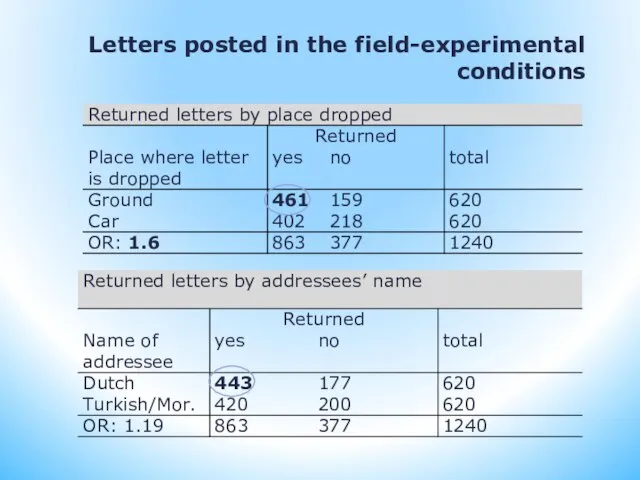
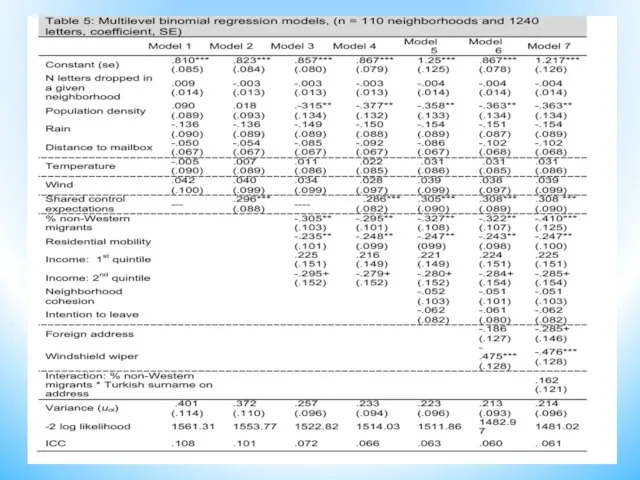
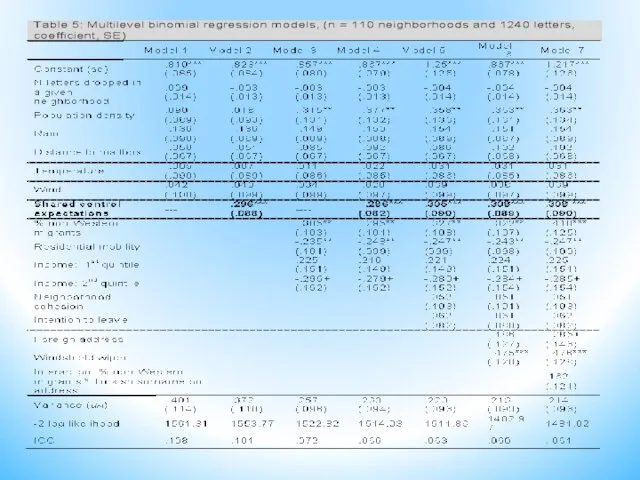
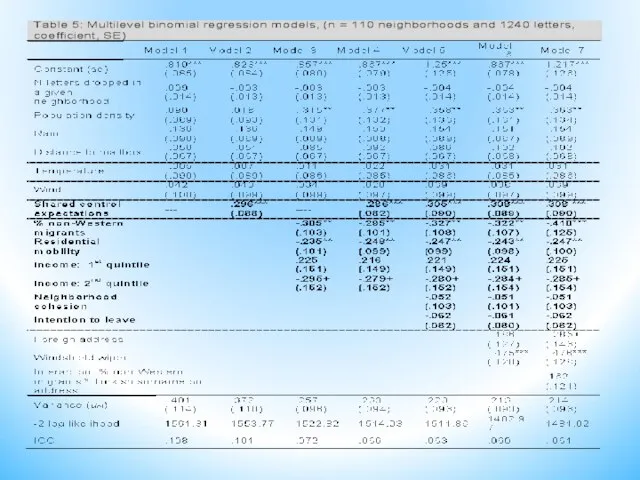

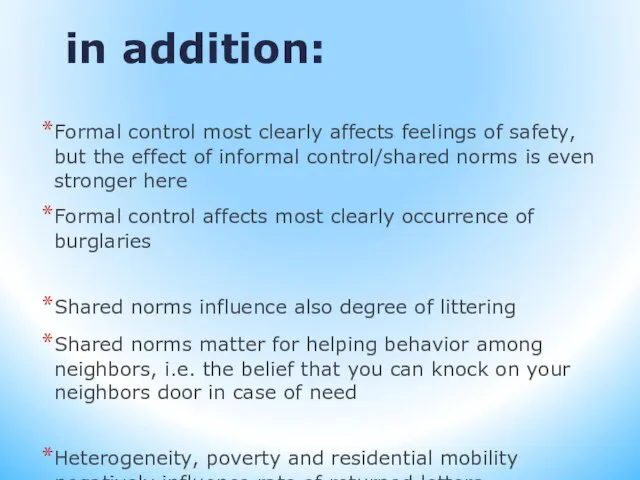


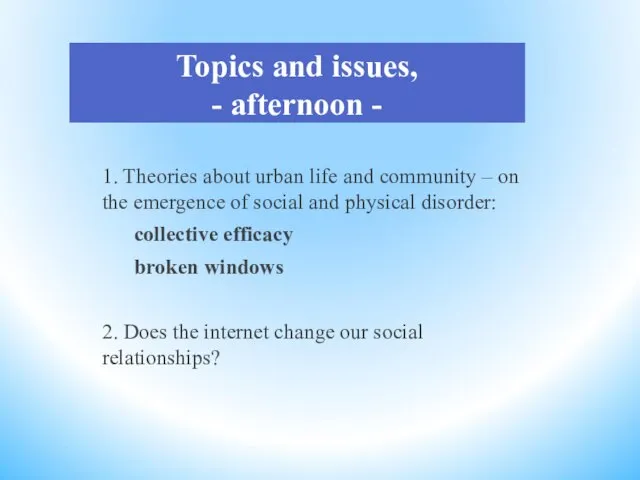
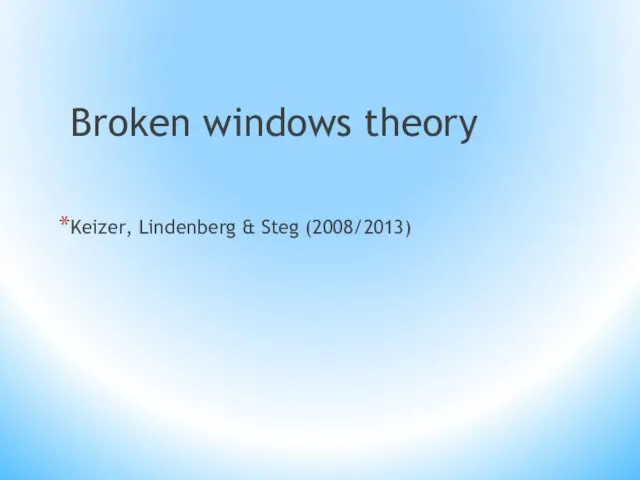
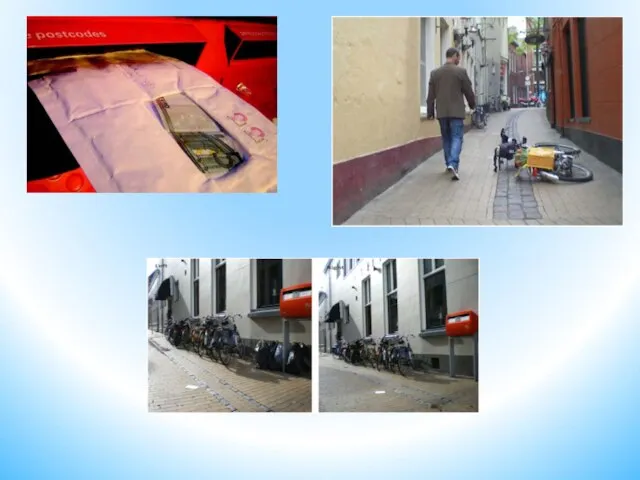
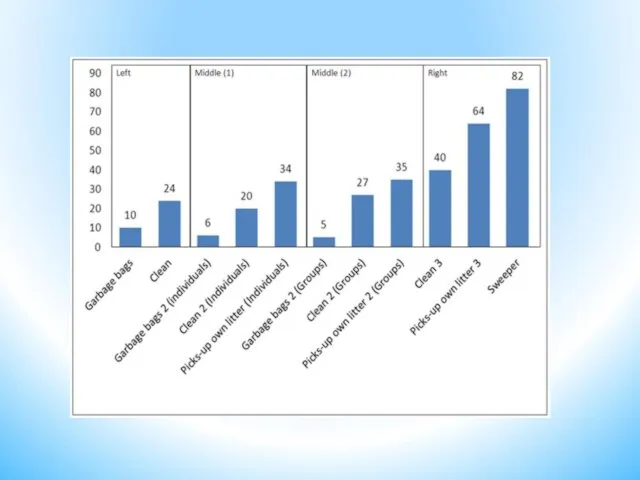
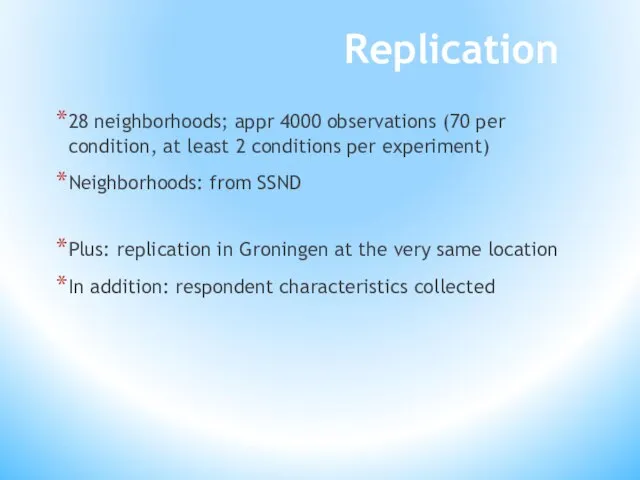
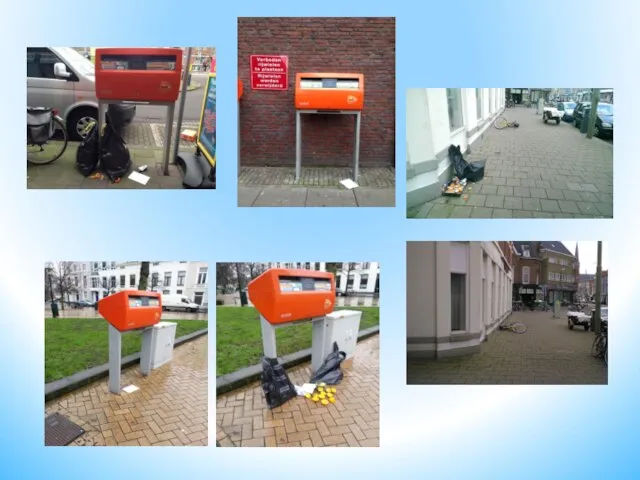
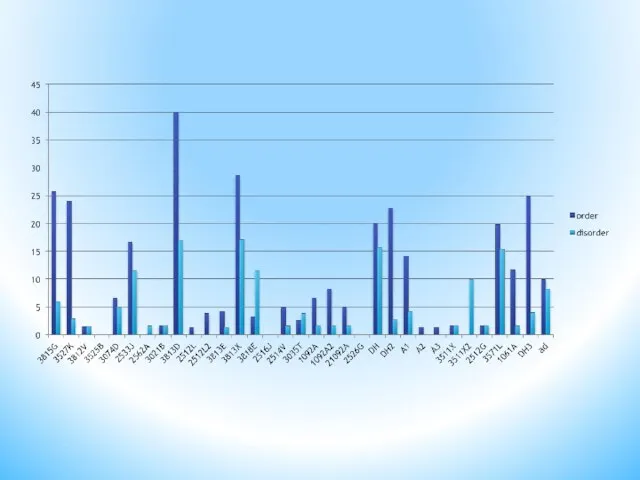
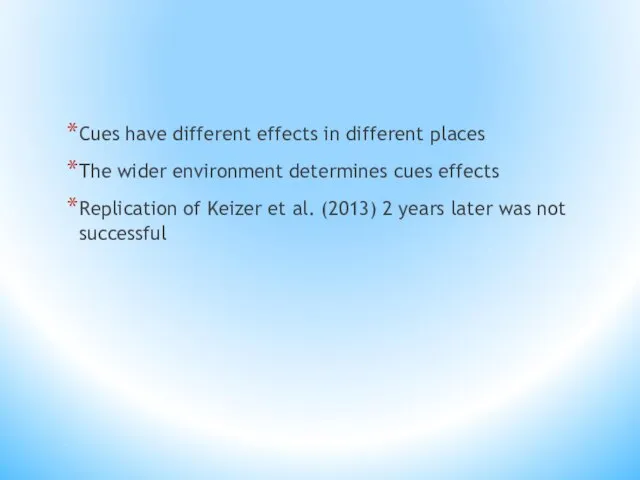
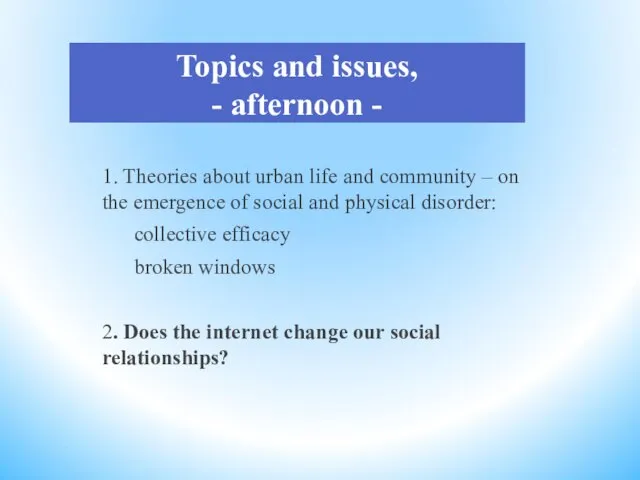
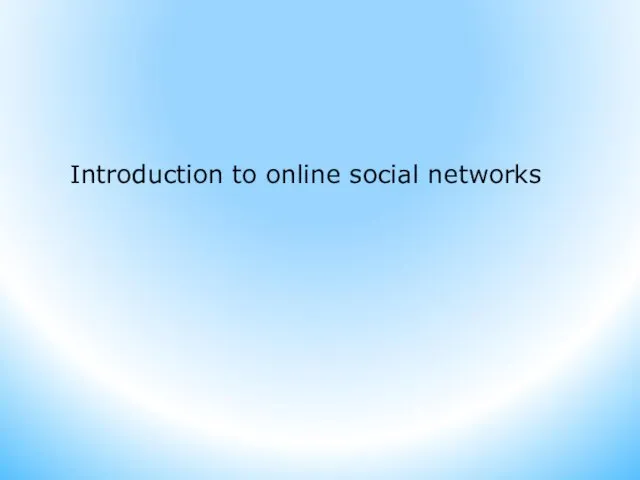
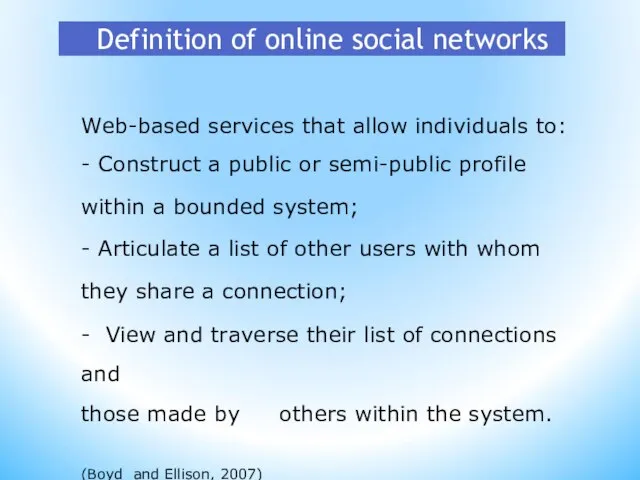
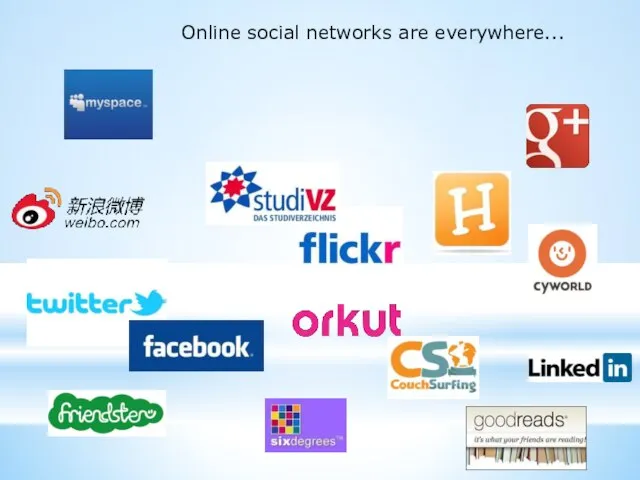
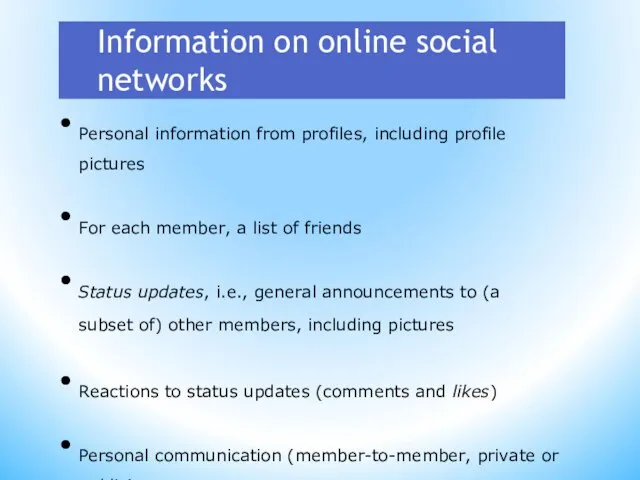
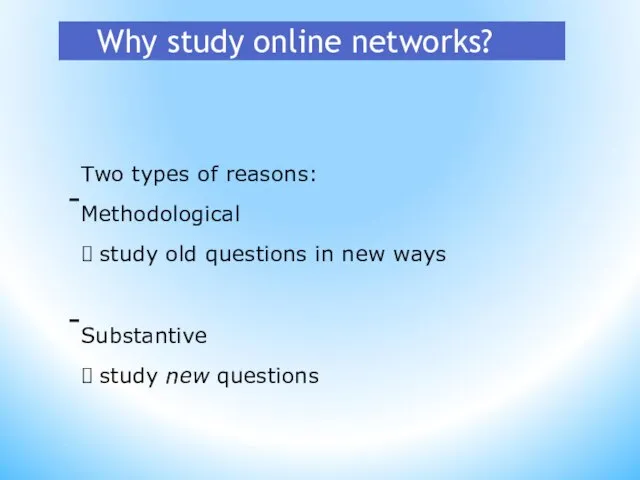
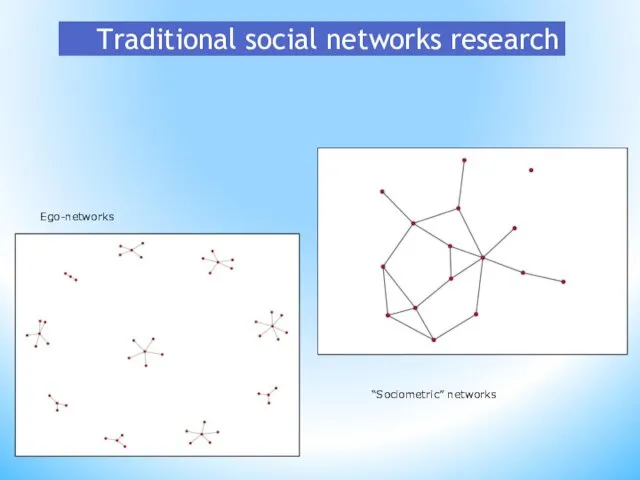
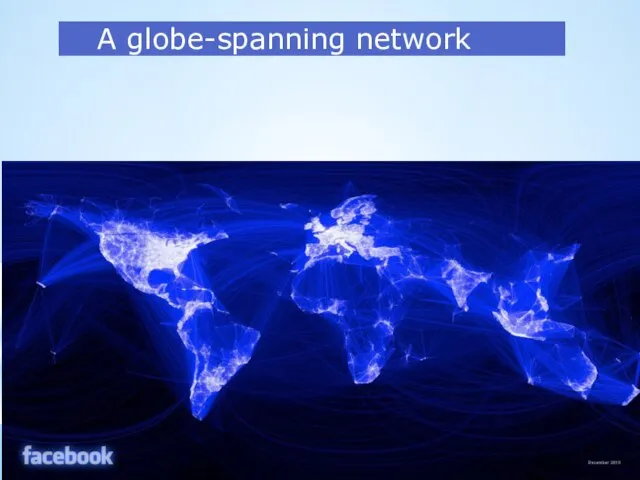

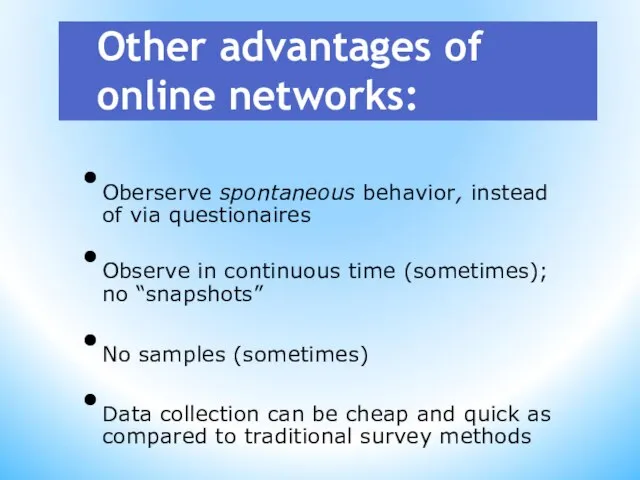
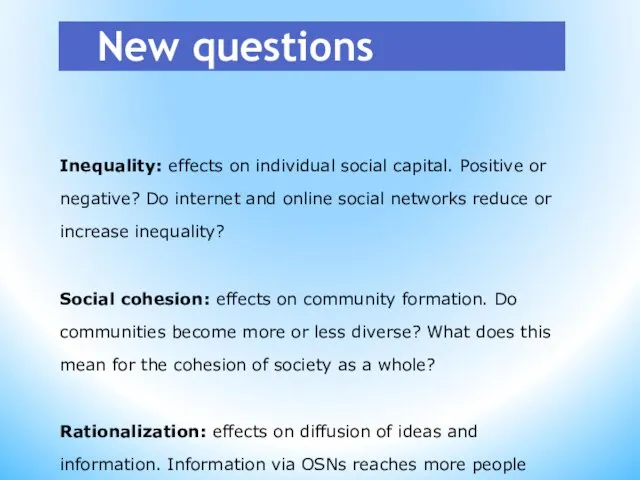

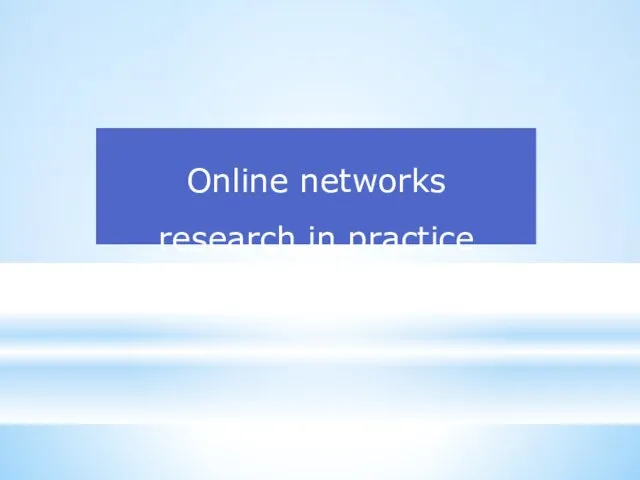
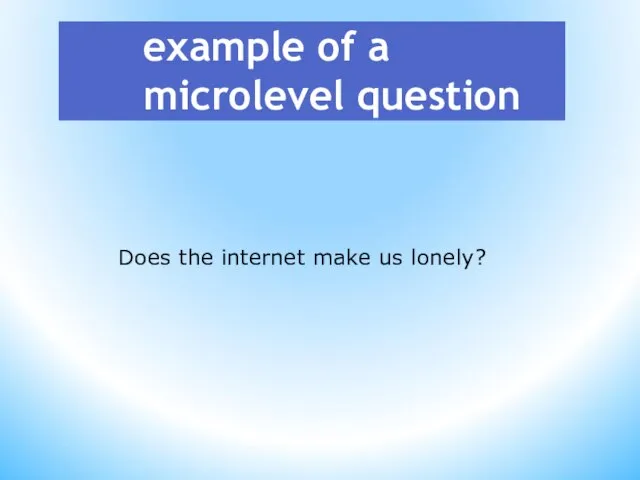

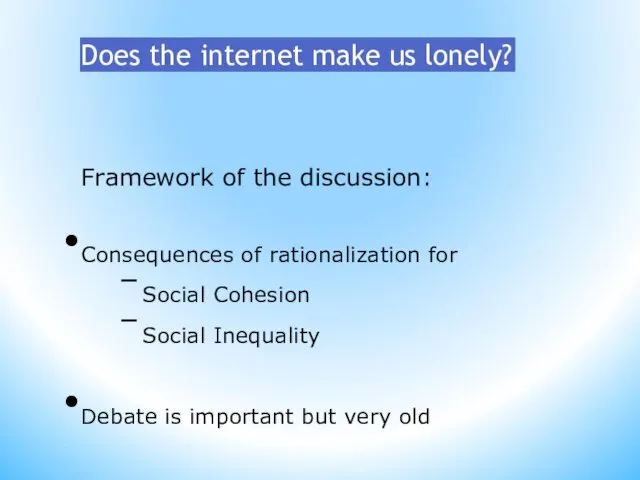
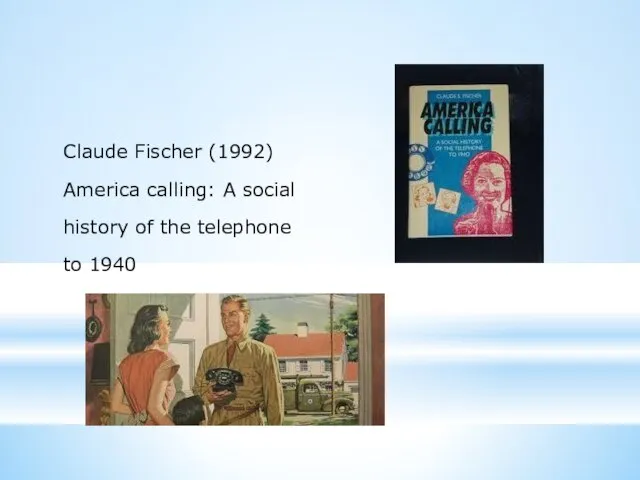
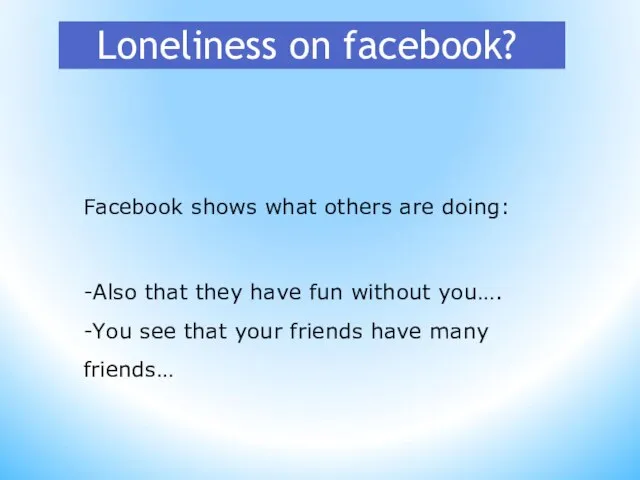
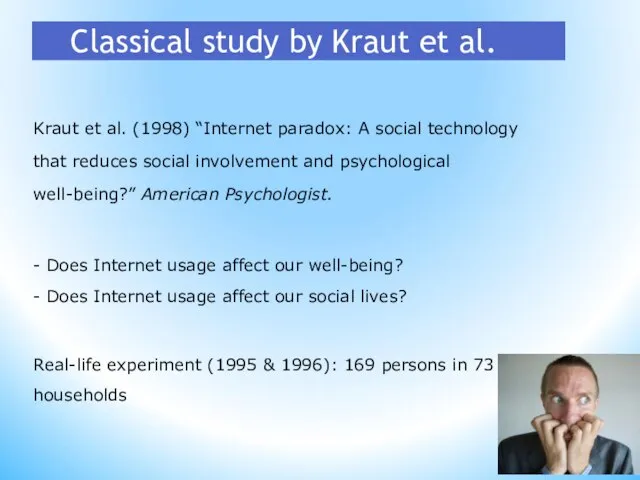
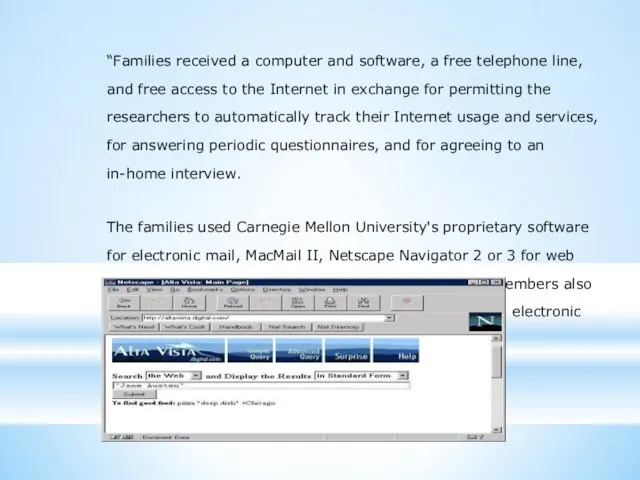
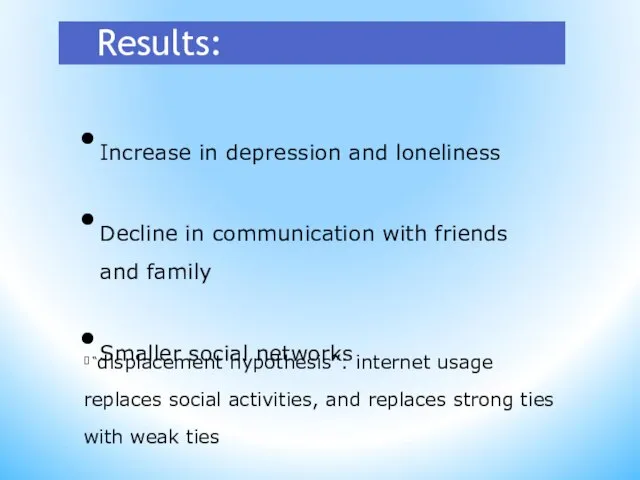
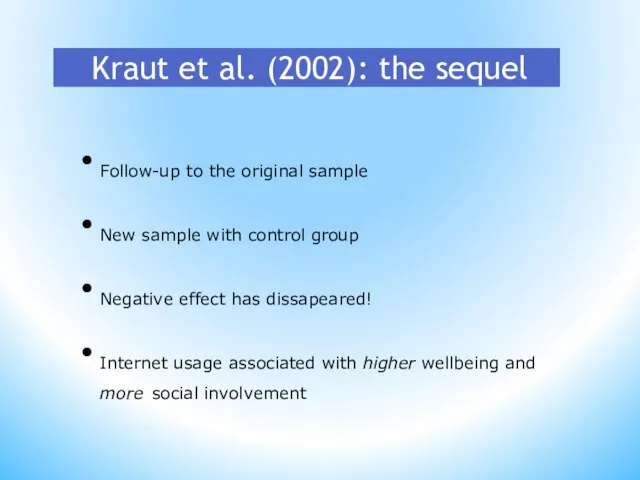
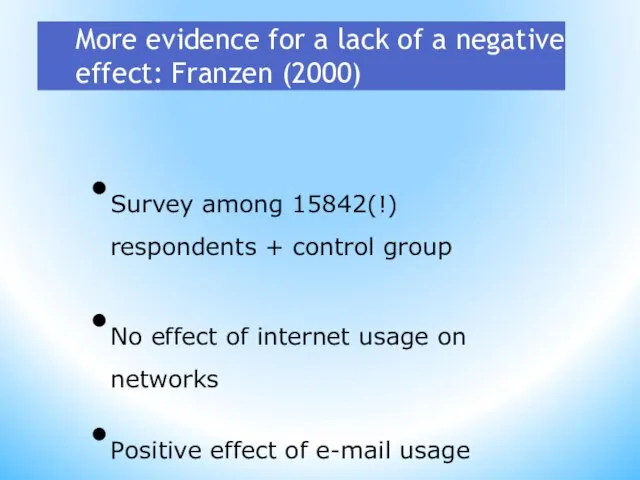
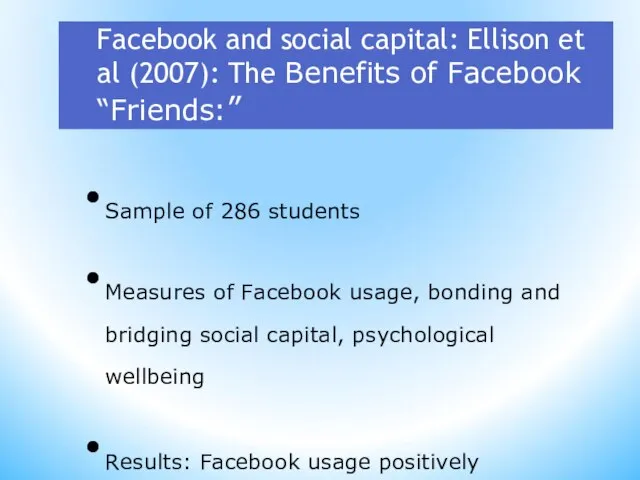
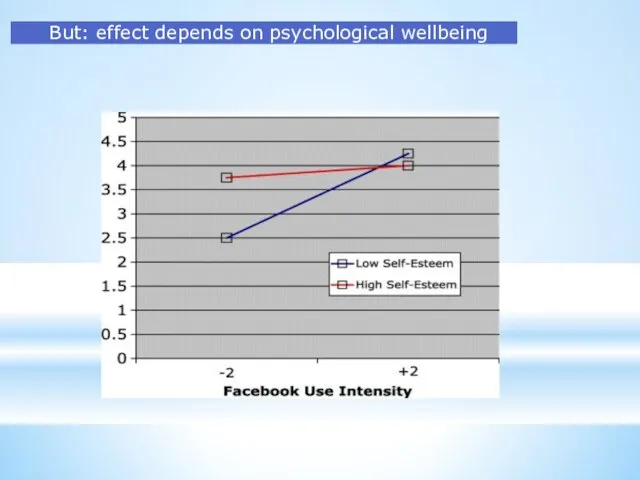
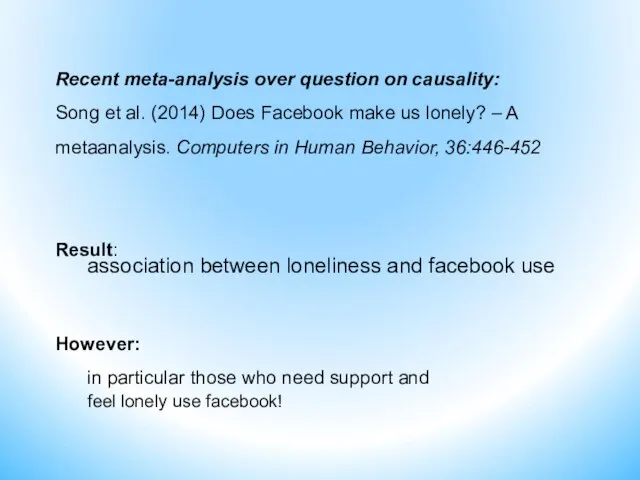
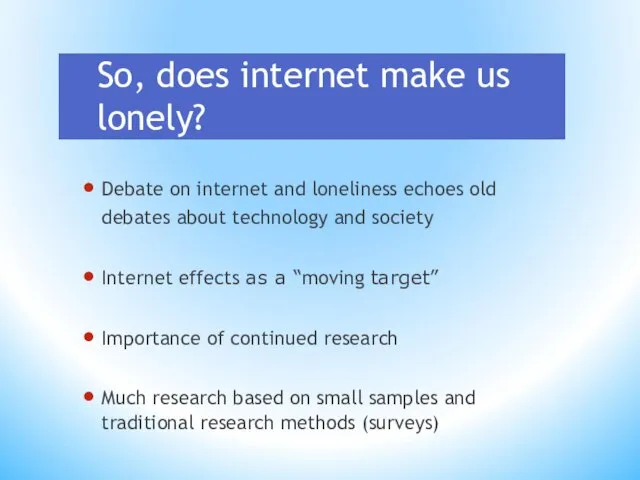
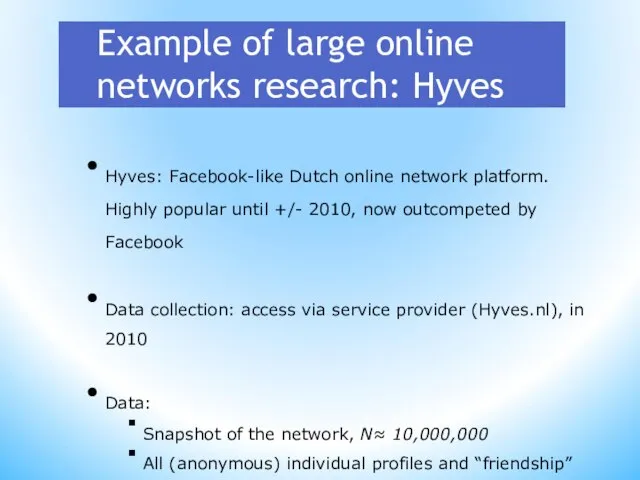

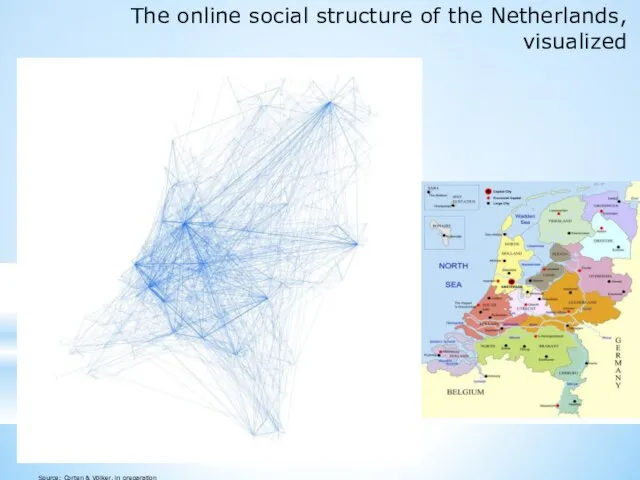
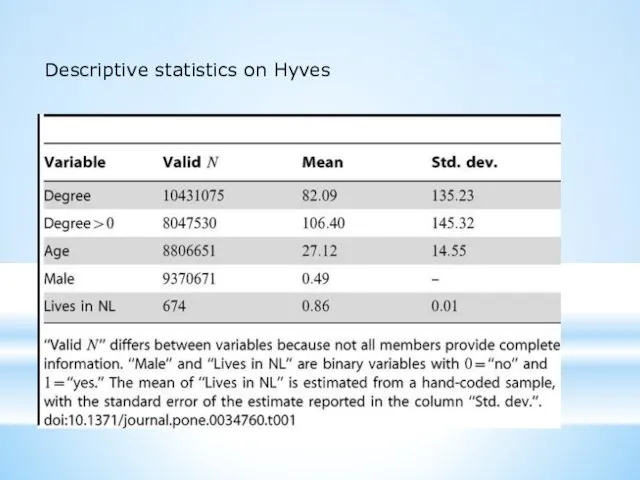
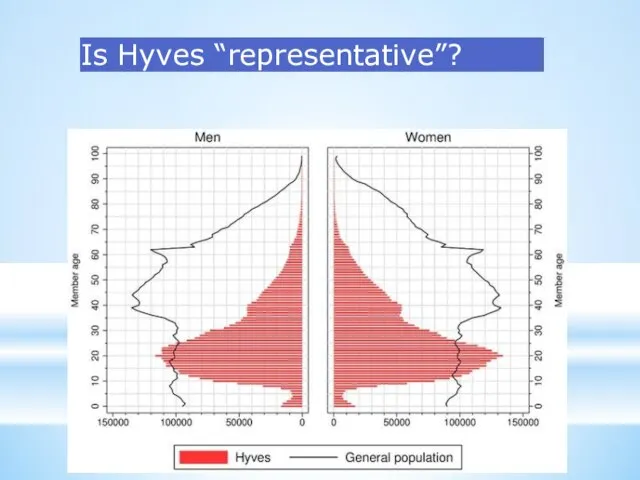
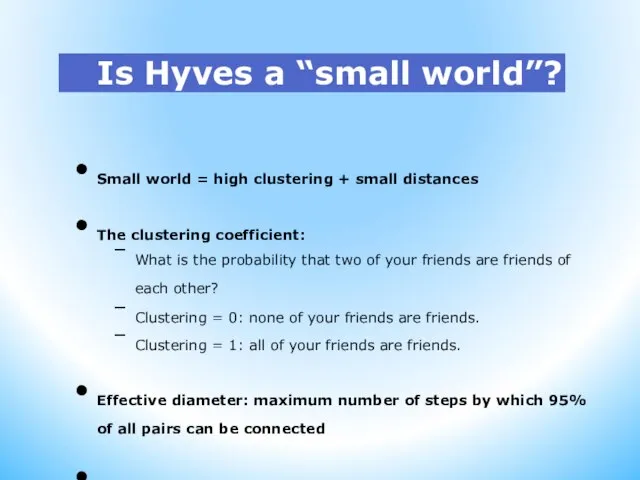
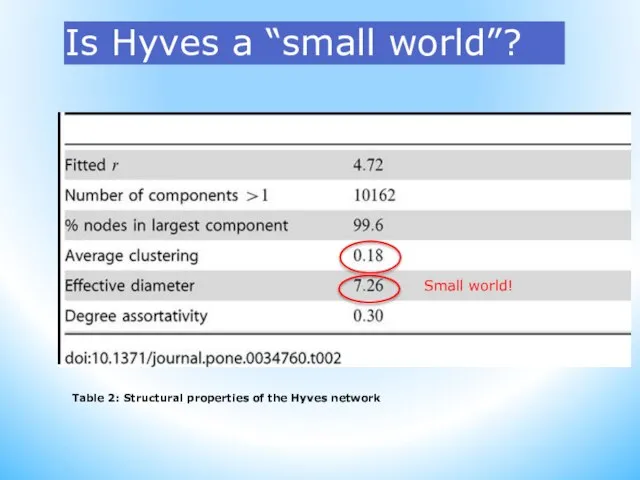
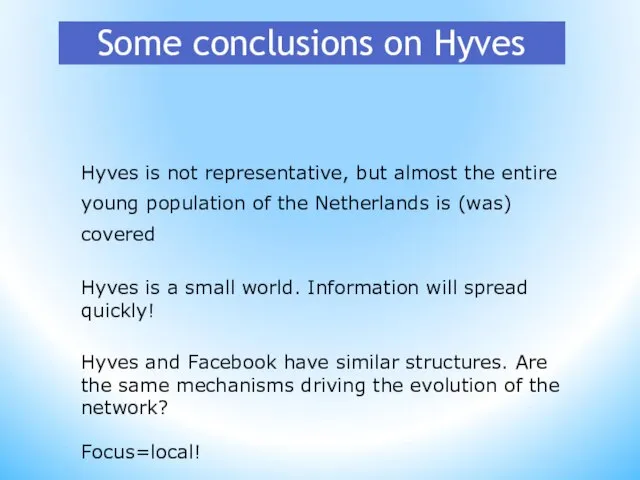

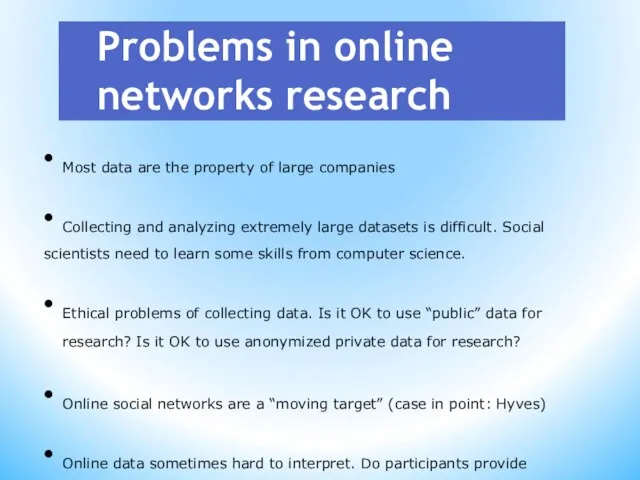
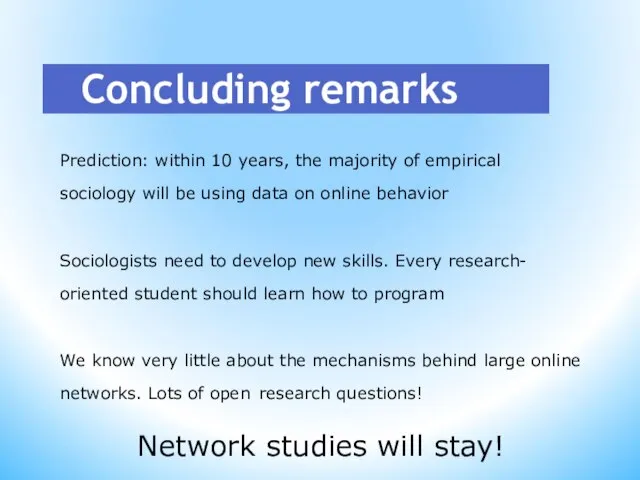
 Улучшение мониторинга бюджета и отслеживания расходов на вопросы здравоохранения и обособленных групп
Улучшение мониторинга бюджета и отслеживания расходов на вопросы здравоохранения и обособленных групп Правописание гласных в корне
Правописание гласных в корне Обучение ТЕРМЕКС
Обучение ТЕРМЕКС ЧИСЛЕННОЕ КОНФОРМНОЕ ОТОБРАЖЕНИЕ В ДВУМЕРНОЙ ГИДРОДИНАМИКЕ И СМЕЖНЫЕ ПРОБЛЕМЫ ЭЛЕКТРОДИНАМИКИ И ТЕОРИИ УПРУГОСТИ
ЧИСЛЕННОЕ КОНФОРМНОЕ ОТОБРАЖЕНИЕ В ДВУМЕРНОЙ ГИДРОДИНАМИКЕ И СМЕЖНЫЕ ПРОБЛЕМЫ ЭЛЕКТРОДИНАМИКИ И ТЕОРИИ УПРУГОСТИ Публичный отчет МБОУ «Куракинская средняя общеобразовательная школа» (29 февраля 2012 года)
Публичный отчет МБОУ «Куракинская средняя общеобразовательная школа» (29 февраля 2012 года) Проект:«Права и обязанности членов семьи»
Проект:«Права и обязанности членов семьи» Организация оказания помощи больным с острым коронарным синдромом в региональных и первичных сосудистых центрах субъектов Росси
Организация оказания помощи больным с острым коронарным синдромом в региональных и первичных сосудистых центрах субъектов Росси Воспитание культурно-гигиенических навыков и навыков самообслуживания у детей раннего возраста
Воспитание культурно-гигиенических навыков и навыков самообслуживания у детей раннего возраста Кампания -Лето 2011в МОУ СОШ № 3
Кампания -Лето 2011в МОУ СОШ № 3 ПРЕОБРАЗОВАНИЕ ЭЛЕКТРОМАГНИТНЫХ ВОЛН В ПОЛЕ УСКОРЕНИЙ
ПРЕОБРАЗОВАНИЕ ЭЛЕКТРОМАГНИТНЫХ ВОЛН В ПОЛЕ УСКОРЕНИЙ Ренессанс
Ренессанс «Ускорение процессов взаимодействия в части урегулирования автомобильных убытков при работе в коммуникационном проекте электро
«Ускорение процессов взаимодействия в части урегулирования автомобильных убытков при работе в коммуникационном проекте электро 85-летие стандартизации в России
85-летие стандартизации в России 5F70~1
5F70~1 Синтез цвета в полиграфии
Синтез цвета в полиграфии Сатирический портрет в искусстве
Сатирический портрет в искусстве Презентация на тему Храмы России
Презентация на тему Храмы России Организация внеурочной деятельности в МБОУ «Гатчинская НОШ № 5» в 2010-2011 уч.г.
Организация внеурочной деятельности в МБОУ «Гатчинская НОШ № 5» в 2010-2011 уч.г. Презентация на тему География мировых природных ресурсов 10 класс
Презентация на тему География мировых природных ресурсов 10 класс Презентация на тему Экологические группы растений по отношению к воде
Презентация на тему Экологические группы растений по отношению к воде  Обеспечение карьерного роста в образовательном учреждении
Обеспечение карьерного роста в образовательном учреждении Подход Джона Локка к процессу психического развития человека
Подход Джона Локка к процессу психического развития человека Дифференциальный диагноз при аритмиях
Дифференциальный диагноз при аритмиях  Alma mater
Alma mater Моя фирма. Резюме фирмы
Моя фирма. Резюме фирмы Написание сжатого изложения
Написание сжатого изложения Презентация на тему С Днем знаний
Презентация на тему С Днем знаний Проведение корпоративных мероприятий в парке Маяковского
Проведение корпоративных мероприятий в парке Маяковского